Fountains Abbey
PILGRIMAGE UK: HOLY PLACES

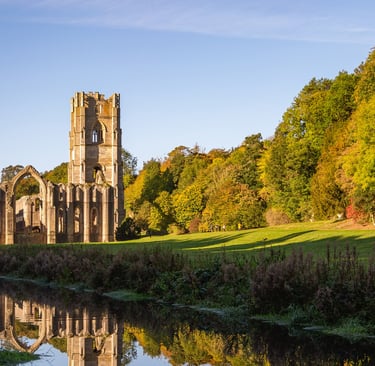
Fountains Abbey, nestled on the edge of the River Skell in North Yorkshire, stands as one of Britain’s most awe-inspiring ruined monastic sites. Built in 1132 by a group of dedicated monks who later embraced the austere Cistercian rule, the abbey has endured the ravages of time to emerge as a place where history, nature, and spirituality converge in a quiet symphony of stone and memory.
From afar, the sprawling ruins of Fountains Abbey are immediately arresting. Vast walls of weathered stone, once part of an opulent monastic complex, now speak in solemn whispers of a past steeped in devotion and industrious endeavour. The immense scale of the ruins, recognised as the largest monastic ruin in the country, invites the onlooker to enter a realm where the transient nature of human endeavour is interwoven with the eternal rhythm of nature. As one draws closer, every detail—the graceful curve of an archway, the delicate tracery of a surviving window, the intricate patterns worn into the stone by centuries of wind and rain—appears to testify to the monks' enduring quest for spiritual purity and their deep commitment to a life of prayer and manual labour.
Within these ruins, the legacy of the abbey’s early days is palpable. Originally established by thirteen monks seeking a life removed from the distractions of urban indulgence, Fountains Abbey rapidly grew in wealth and influence through wool production, lead mining, and a host of agricultural endeavours. Yet, beyond its economic might, the abbey was a centre of profound spiritual discipline. The austere Cistercian rule, with its strict observance of silence, simplicity, and hard work, forged a community that strove to embody a purity of heart and a closeness with the divine. Even now, when one wanders amid the quiet remains of the abbey’s church and cloisters, there is an almost tangible sense of the people who once knelt in prayer beneath these very skies.
The reflective quality of Fountains Abbey extends beyond its physical remains. The abbey’s ruins are set against a meticulously cultivated landscape that has evolved into Studley Royal Park—a part of the UNESCO World Heritage Site that fuses natural beauty with historic grandeur. This integration of architectural decay and the flourishing countryside creates a remarkable dialogue between the built and the unbuilt. The lush greenery and the gently flowing river lend a kind of restorative energy to the abbey, as if nature herself is reclaiming these hallowed stones and, in doing so, offering an implicit benediction on the passage of time.
For those who visit Fountains Abbey on a private, reflective pilgrimage, there unfolds a quiet, personal narrative. In the stillness of early morning, with the mist rising slowly from the river and the rustle of the trees providing a gentle soundtrack, individuals often find themselves absorbed in a reverie of contemplation. There is a distinctive quality to moments spent alone amidst these ruins—a sense of stepping outside the relentless march of modern life, and entering a space where each stone, each fragment of old wall, carries the weight of centuries of reverence. In the silence, one might hear the distant echoes of Gregorian chants that once filled the abbey’s vast nave. Here, in this serene environment, the soul is given the opportunity to engage in an inward journey, reflecting on the impermanence of worldly gain and the enduring hope of resurrection that forms the very foundation of the Christian faith.
Yet, contrast emerges when Fountains Abbey becomes the destination for a communal pilgrimage—a grand procession that gathers countless souls united in their collective search for renewal. On the day of the annual pilgrimage, myriad groups from parishes across the United Kingdom converge upon the abbey, transforming its tranquil precincts into a vibrant instance of shared devotion. The rhythmic chanting and the collective well-wishes create a palpable energy that differs markedly from the quiet introspection of an individual visit. In this larger context, the pilgrimage is less about personal introspection and more about the affirmation of communal faith—a celebration of heritage and togetherness in which every step taken by the procession echoes the centuries of shared spiritual endeavour. The annual event, steeped in tradition and bolstered by the support of contemporary parishes, reminds all participants that even amidst the vestiges of disuse and decay, the spirit of Fountains Abbey continues to inspire and unite.
The duality between solitary reflection and communal celebration highlights an important truth in Christian spirituality: that the encounter with the sacred can occur in both the quiet moments of personal prayer and the collective exuberance of communal worship. Fountains Abbey serves as an ideal setting in which to appreciate this multifaceted nature of pilgrimage. Alone, one may contemplate the journey of those monks whose lives were devoted not only to austerity but also to an earnest search for divine truth. In their disciplined silence, they discovered a language of prayer expressed through the very fabric of their surroundings. In the communal gathering, one witnesses that the call to holiness is an invitation extended to all, a reminder that the path of faith is best travelled together, amid shared hopes and communal resilience.
The physical structure of Fountains Abbey itself becomes a metaphor for the journey of faith. Its soaring walls, now gracefully crumbling, remind the pilgrim that even the most majestic human constructions are subject to the inexorable passage of time. Yet, within this decay lies a profound beauty—a demonstration of the natural order of renewal and the hope of resurrection. The careful conservation efforts by organisations such as the National Trust mean that these ruins are preserved not merely as relics of the past, but as vivid portals through which the essence of historic devotion remains alive. Every time a visitor pauses at a fragment of a column or a piece of weathered stone, there is an invitation to recall that faith, like the abbey itself, is resilient and creative, transcending the limitations of time and decay.
In the interplay of light and shadow within the abbey’s remains, theologians can discern a silent sermon on the mysteries of existence. The shifting sunlight, falling upon the ancient stones in manners both unexpected and gentle, serves as a visual metaphor for divine grace entering the human realm. Such a phenomenon resonates with the age-old belief that God’s light is present even in the darkest of places—an assurance that, regardless of apparent ruin, the promise of eternal life remains intact. In this sense, Fountains Abbey is not just a place of reflection; it is a living scripture, inscribed in stone and soil, inviting each pilgrim to witness the hand of God at work throughout the ages.
For many, the experience of Fountains Abbey is transformative. The space compels one to reckon with the transient nature of earthly achievements and to embrace a more lasting, spiritual heritage. It is a place where the achievements of the past are not merely studied as history, but experienced as a guide for contemporary faith life. From the majestic abbey ruins to the verdant expanses that surround it, every element of the site contributes to an environment in which the eternal and the temporal coexist in a delicate balance.
Ultimately, Fountains Abbey remains a profound reminder that sacred spaces, even when reduced to ruins, maintain their power to inspire, uplift, and nurture the human spirit. It is a soulful testament to the combination of human endeavour and divine grace—a place where the pilgrim, in quiet contemplation or in the buoyant company of fellow believers, encounters a timeless dialogue between history and hope. The abbey stands as a monument not only to the monks who once lived in austere devotion but also to the ongoing journey of anyone willing to listen to the quiet stories etched upon its ancient stones.
In embracing both the solitude of a private pilgrimage and the vibrancy of communal celebration, Fountains Abbey continues to light the way for those seeking reassurance in a rapidly changing world. It invites travellers on a journey of reflection that transcends the ordinary, offering a space to contemplate the eternal amidst the gentle decay of a once-glorious monastic world. And in that silent honouring of the past, every pilgrim is gently reminded that even in ruination, there remains beauty, hope, and a steadfast, everlasting light.
Fountains Abbey: A Living Testament to Monastic Grandeur and Timeless Reflection
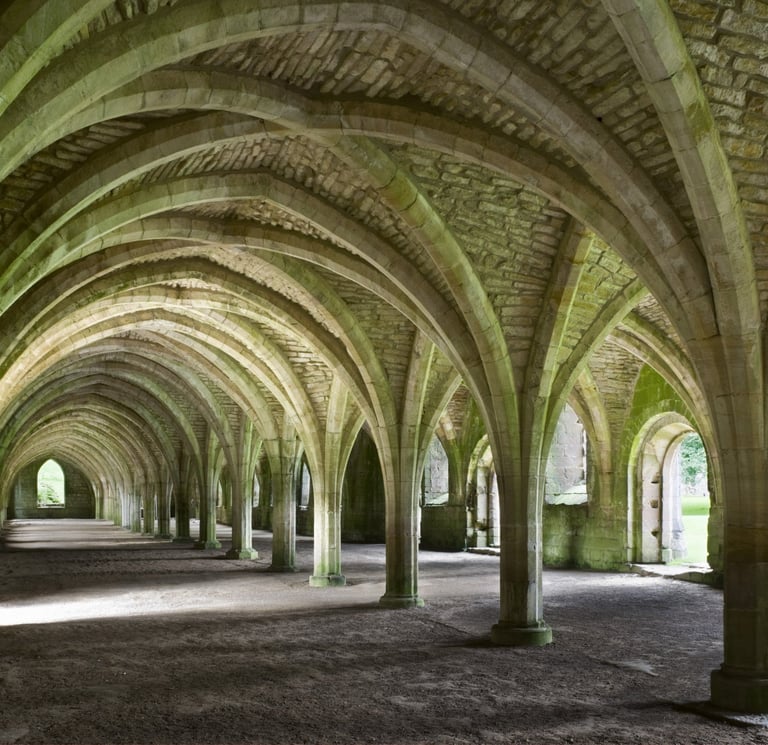

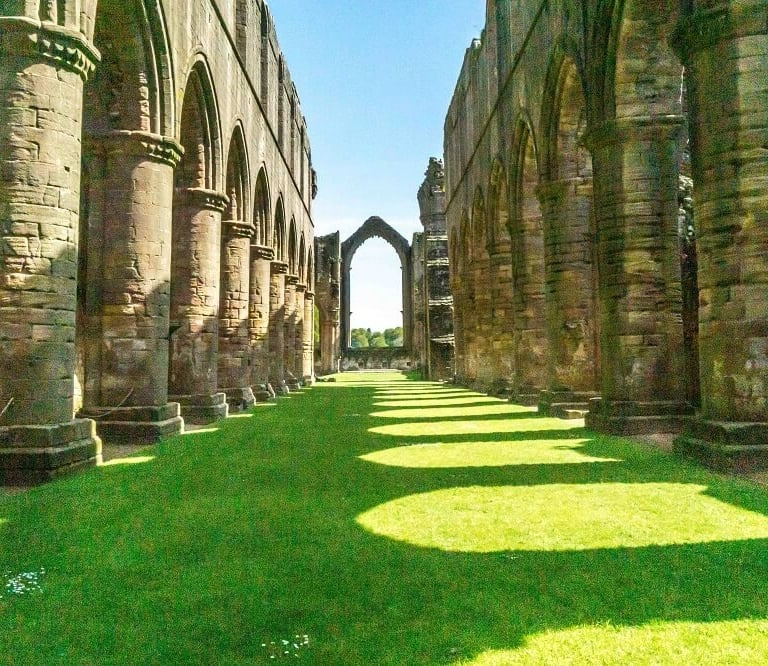

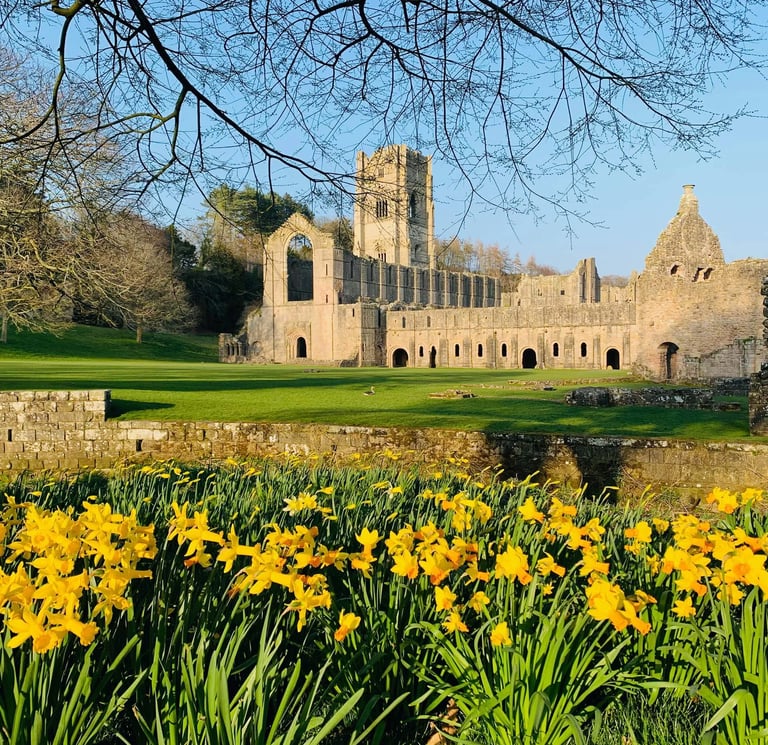

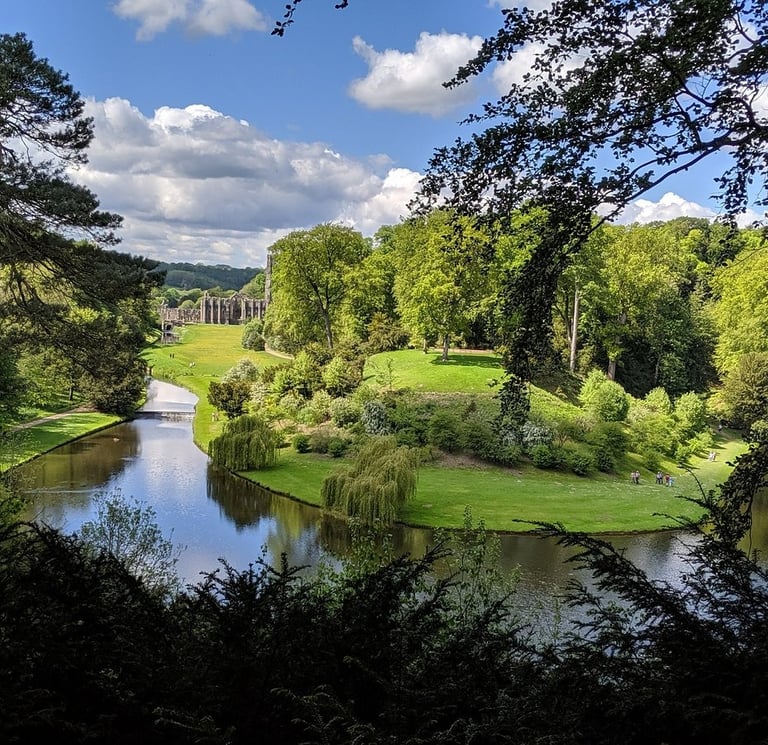

Ancient Apostolic Catholic Church
Embracing faith, inclusion, and compassionate service together.
ST THOMAS AQUINAS SEMINARY
© 2025. All rights reserved
QUICK LINKS
